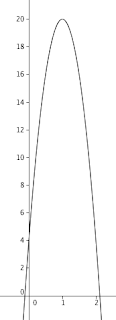Most of the posts that usually gather in the blog hop are activities. Before we get to activities, we might want to ask ourselves some questions, like "What is multiplication?" Multiplication can be modeled in many ways, and it's important to give young kids a chance to think about it through lots of different frameworks. Your own conceptions of multiplication may grow as you think about it.
 One resource that will help you broaden your perspective on multiplication (along with a number of other math topics) is the lovely book Moebius Noodles. (It's $15 for the paperback version, and whatever you decide to pay for the pdf version.) It is full of activities to share with young kids.
One resource that will help you broaden your perspective on multiplication (along with a number of other math topics) is the lovely book Moebius Noodles. (It's $15 for the paperback version, and whatever you decide to pay for the pdf version.) It is full of activities to share with young kids.I also love the art connection made by Waldorf schools, with their multiplication stars. Beauty helps us love what we're doing, which helps us learn.
As we teach, the more we can see the child's understanding, and help that grow, instead of telling them what is so, the better off we are. I can think of two ways we might just tell children our adult understanding, without giving them enough opportunities for exploration. One is in the commutative nature of multiplication, noticing that 3x5 = 5x3. Kids don't see that at first. If we tell them, we take away their chance to discover it. I never knew that until I read ‘Third Graders Explore Multiplication’, a chapter by Virginia Brown in the book What's Happening In Math Class, Volume 1, edited by Deborah Schifter. [You might be interested to know that mathematicians study versions of multiplication that are not commutative. Matrices are a tool for solving systems of equations, if A and B are matrices, AB may not equal BA.]
The other example I'd like to share of this is our knowledge that to multiply by ten we just "add a zero". (Why does that work?) Here's an excerpt from the chapter 'Trust, Montessori Style', by Pilar Bewley in the soon-to-be-published book Playing With Math (edited by me):
Answer Versus Process
Five-and-a-half-year-old Roland came to ask if he could multiply 8,696 times 10 using the stamp game. I was thrilled to see his interest in math taking off again after an unfortunate temper tantrum with the addition blank chart. I suggested he borrow a stamp game box from another classroom to supplement the one we have in ours, and he got started.
It took him a while to figure out where he would do the work, and then he painstakingly began to make 8,696 with the stamps… Six units, nine tens, six hundreds, and eight thousands… Leave a space and repeat… Six units, nine tens, six hundreds, and eight thousands…
He made the amount five times before it was time to go home, and he left his work out so he could return to it the next day. (Can you imagine what that looks like, once you’ve made 8,696 with little colored tiles ten times? How cool!)
“I’m going to get right back to work as soon as I change my shoes,” he declared before leaving that afternoon. “I won’t even talk to anybody!”
I waited eagerly for him to arrive the next morning, looking forward to the moment when he would put AAAAAALLLLLL those tiles together in neat rows by category, and he would have to exchange several times (not to mention his surprise at seeing all the units disappear when multiplying by ten).
Instead Roland came in, shook my hand, and said: “My dad told me that all I have to do is add a zero to 8,696 and I’ll have my answer, because when you multiply by ten you just add a zero.”
My heart sank. Oh no, Dad! You robbed your son of such a cool experience! He was getting ready to see what ten times 8,696 looks like, and would have discovered the process that takes place during multiplication. He won’t be doing multiplication tables for at least two more years in public school - the answer doesn’t matter yet, but the process could have really taught him something valuable.
Although I firmly believe that math is about understanding, multiplication facts are one of the few things that need to be memorized. Many students come to college not knowing those basic facts. When I was teaching beginning algebra, I gave a quick quiz on all the basic multiplication facts, and required students to keep trying until they could get 85% right. Here are some of the suggestions I offered them:
- Try some of the games at Math Playground.
- Use these flash cards, which help you visualize the numbers.
- Play the Product Game.
Those suggestions were for adults who were likely to have emotional baggage about not yet knowing something basic. For kids, just have fun. Make up games (like John Golden does) using dice or cards, go on scavenger hunts, or tell stories. (Perhaps you could tell stories about the large family, who have to buy in bulk because they have so many children. Each child needs 3 pair of shoes, for dress-up, play, and beach. How many shoes are in that house?)
Hmm, all of that and I haven't even mentioned division. I guess that will have to wait for its own post.



























